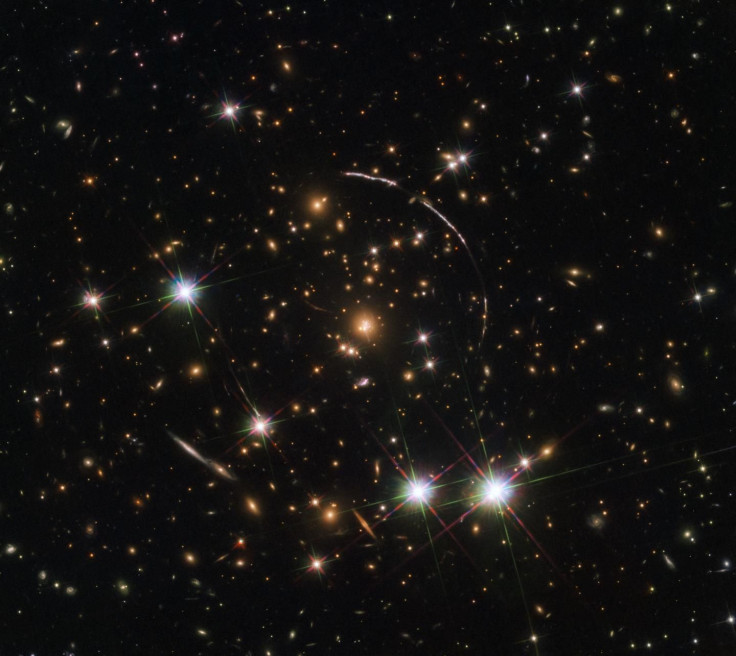NASA, ESA’s Hubble Capture Stunning Kaleidoscope Galaxy Distorted By Gravity

NASA and the European Space Agency’s Hubble Space Telescope was able to capture a stunning photo of a distant galaxy. According to the agency, the image looks like it was viewed from a kaleidoscope due to the gravitational forces that warped the light coming from the cosmic object.
The subject featured in Hubble’s latest photo is known as the Sunburst Arc, which is about 11 billion light-years from Earth. In the image, the galaxy appears like a kaleidoscope illusion after the light it emits was distorted by the cluster of galaxies in the foreground.
NASA pointed out that the image is a perfect example of Albert Einstein’s concept of gravitational lensing, which helped develop his general theory of relativity. According to Einstein, gravity exerted by a massive cosmic object can bend the light passing through it.
“This beautifully demonstrates Einstein's prediction that gravity from massive objects in space should bend light in a manner analogous to a funhouse mirror,” NASA said in a statement. “His idea of space warping was at last proven in 1919 by observations of a solar eclipse where the sun’s bending of space could be measured.”
“A further prediction was that the warping would create a so-called ‘gravitational lens’ that, besides distortion, would increase the apparent size and brightness of distant background objects,” the agency added.
In Hubble’s photo, the cluster of galaxies is located about 4.6 billion light-years away from Earth. Due to their gravitational forces, the light coming from the Sunburst Arc got warped and distorted as it passed through the galactic cluster. This caused the image to appear like a cosmic kaleidoscope illusion.
Due to gravitational lensing, Hubble’s photo features over 12 images of the Sunburst Arc. Even though this galaxy is far away, NASA and other space agencies are able to observe it due to the magnifying effect caused by gravitational lensing.
“Hubble uses these cosmic magnifying glasses to study objects that would otherwise be too faint and too small for even its extraordinarily sensitive instruments,” NASA explained. “The Sunburst Arc is no exception, despite being one of the brightest gravitationally lensed galaxies known.”
© Copyright IBTimes 2024. All rights reserved.





















